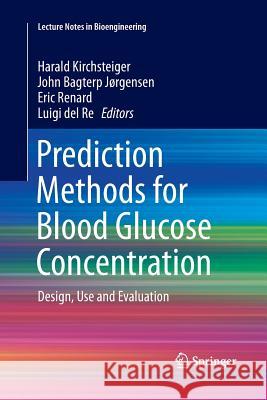Prediction Methods for Blood Glucose Concentration: Design, Use and Evaluation » książka
topmenu
Prediction Methods for Blood Glucose Concentration: Design, Use and Evaluation
ISBN-13: 9783319372983 / Angielski / Miękka / 2016 / 265 str.
Kategorie BISAC:
Wydawca:
Springer
Seria wydawnicza:
Język:
Angielski
ISBN-13:
9783319372983
Rok wydania:
2016
Wydanie:
Softcover Repri
Ilość stron:
265
Waga:
0.39 kg
Wymiary:
23.39 x 15.6 x 1.5
Oprawa:
Miękka
Wolumenów:
01
Dodatkowe informacje:
Wydanie ilustrowane











